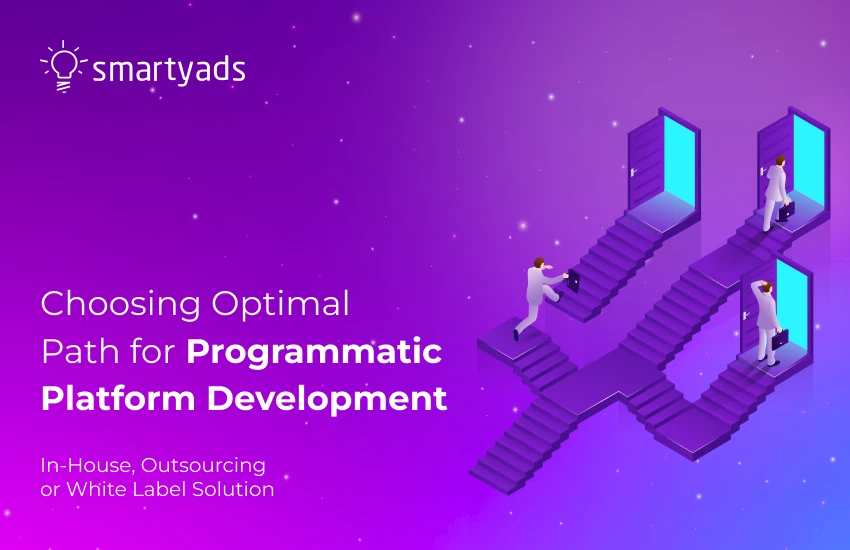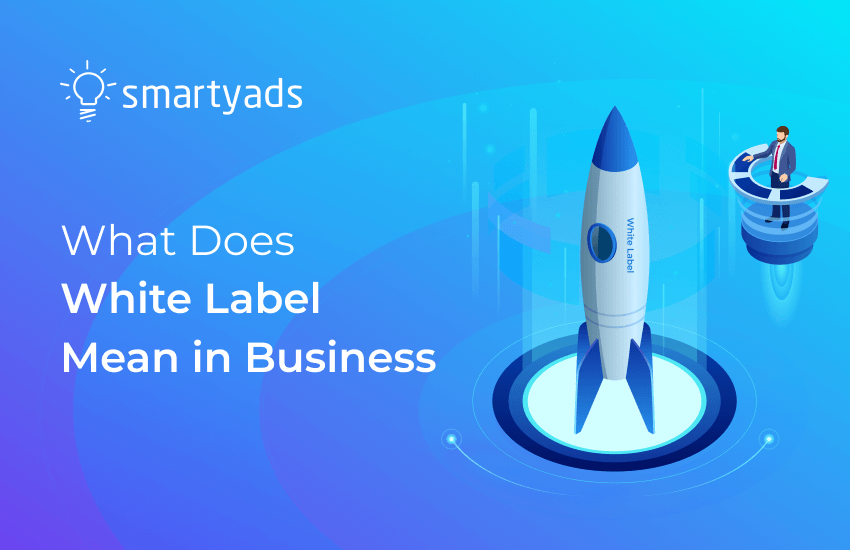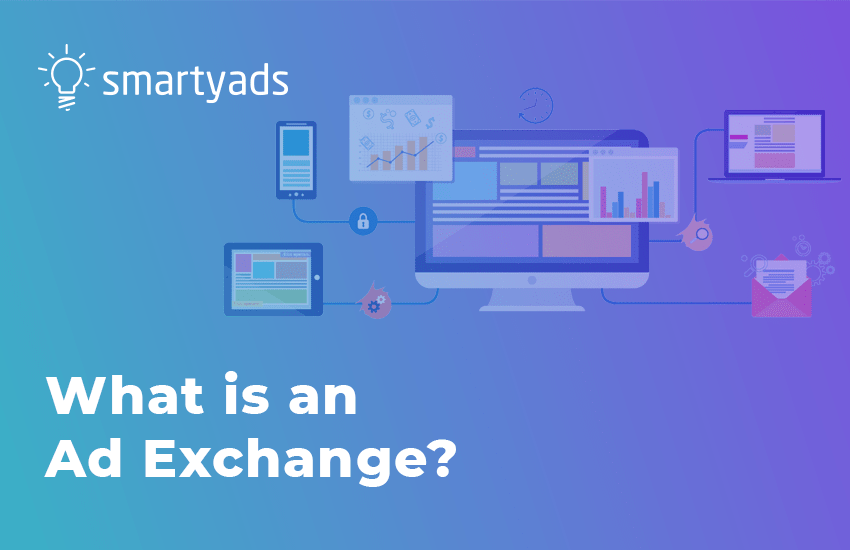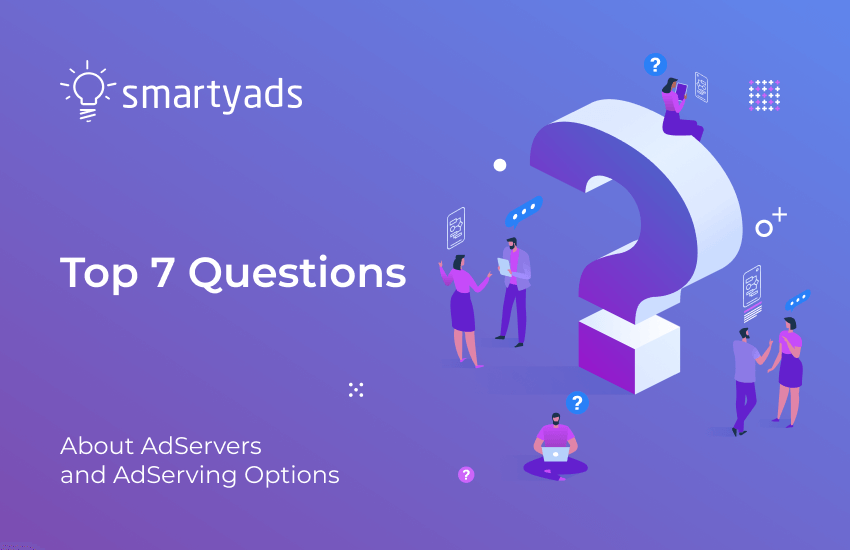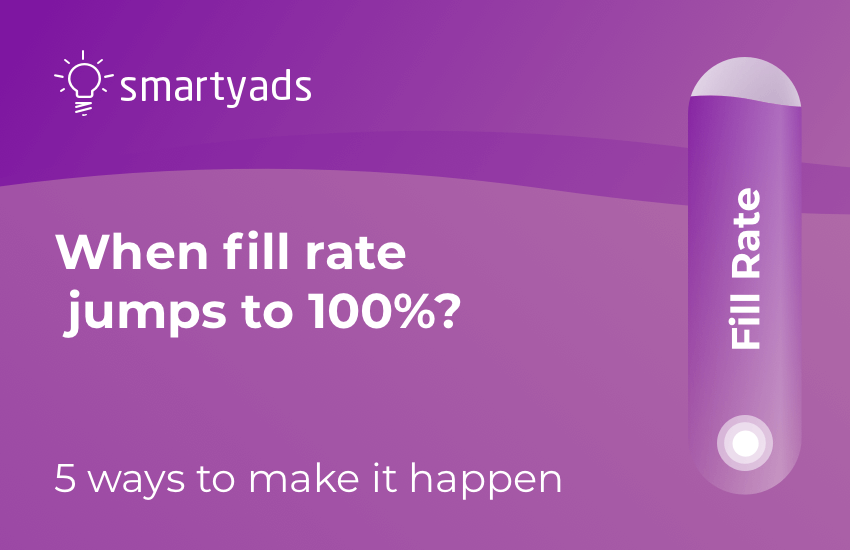Since programmatic advertising entered the stage, it has become increasingly popular. The growth in ad spending proves this — it is forecasted to reach $778 billion by 2028, up from around $545 billion worldwide in 2023.
The demand for this type of advertising has stimulated the development of programmatic platforms. In this guide, we will review three methods, including outsourcing, in-house, and white label, so that you can choose the most suitable approach for you. But first, we will disclose the programmatic development definition.
The programmatic solution is software developed to process the buying and selling of ad inventory using automated algorithms to target specific audiences for better campaign performance. Programmatic development is a constant process related to core technologies' improvement, feature customization, code refactoring, building more friendly interfaces, and so on. Maintaining programmatic infrastructure is also a complex task that requires a team of developers who are aware of AdTech trends and are ready to implement new technologies to stay ahead of the market. That is why it is important to plan any activities related to programmatic development in detail. The better all the issues are considered before the start of software deployment, the more optimally the resources will be allocated.
In-house approach
The definition of in-house methodology is pretty straightforward. The product is built by internal experts employed by your company. These can be professionals already working for you and those you hire after identifying your need for a specific solution. In any case, you get no external help.
When to prefer?
In-house platform building is a great option in the following cases:
- You want to fully control every team member and the project itself;
- You require seamless 24/7 support for your solution;
- You want to maintain the infrastructure on your own;
- You have all the essential experts on your team, including developers, testers, account managers, and others. Looking for new members can be time-consuming, which can be a decisive factor in case you need your product to be developed quickly;
- You have enough resources to allocate to the programmatic platform development. Note that these include not only experts but also time, money, tools, etc.
Nuances to consider
The in-house approach provides you with absolute control over all the processes; however, there are a couple of things to keep in mind.
First, in-house involves significant expenses, which can be critical for small companies. You may need to invest in training, purchase new tools, hire new employees, etc.
Secondly, you will do everything on your own. You will have to prepare a strategy, build your product from scratch, test and maintain it, and so on. This way, you will need a lot of time to get your product to the market.
Besides, if you have other core tasks, building a programmatic platform in-house can distract you from them. This approach requires absolute effort, meaning that your main business processes can be affected.
Outsourcing method
Outsourcing is a practice implying entrusting the development-related processes to another company, partially or in full. Certain tasks will still be your responsibility, like preparing a marketing strategy to promote your solution, but development, testing, and other technical challenges can be performed by a different business.
Outsourcing comes in three forms. The first one, onshoring, means partnering with a provider within your country. Nearshoring implies cooperating with a company from a neighboring country or at least in the same time zone. Offshoring is outsourcing to a distant location. For instance, if your company is located in the USA and you outsource to India, this is offshoring.
When to prefer?
Here are a few situations when outsourcing is the way to go:
- You have already identified all your requirements but have no time and desire to assemble an in-house team;
- You want to be involved only in the marketing and other operations not related to development;
There are no ready-made solutions available for customization; - When you need only the first version of the platform and are ready to maintain and update the product after it is ready;
- When your budget is rather tight and your in-house team is missing the required skills and tech stack. In the case of outsourcing, you will not have to invest in hiring and training processes, as well as subscribe to new tools.
Nuances to consider
Outsourcing is a cheaper approach than in-house, even though it still requires significant investments. Besides, you will be able to focus on your core tasks while the platform is still being built.
However, outsourcing also means less control over the project.
Another thing to keep in mind is possible communication issues. For example, the time difference may affect the processes if you outsource platform development to a significantly distant location. Your company and the selected provider will operate during different hours, so ensuring proper communication can be challenging.
Possible culture and language barriers may also impact your project. In turn, onshoring or nearshoring is usually more expensive than offshoring. Besides, finding a reputable provider can take a lot of time.
White label solutions
A white-label product is built by a different company. You can customize and rebrand it and then sell it to your users under a new name.
Compared to in-house and outsourcing, white label requires much less effort. For instance, if in-house usually means devoting 100% of your time to the development process, the white label allows you to save around 50% of monthly hours.
You will have an opportunity to work on your core business operations while your solution will be ready on short notice.
When to prefer?
Creating a programmatic platform with the white-label approach is the right choice in the following circumstances:
- If a ready-made solution is available on the market and meets your needs;
- When the deadlines are tight, and you need your solution to be ready as quickly as possible but still meet high-quality standards;
- You do not have your own development team and do not want to invest in hiring new professionals or training the already existing ones;
- When you need to cut expenses without compromising quality;
- If you want to reduce risks. A white-label product is already ready, meaning the number of glitches and bugs is minimized. It only has to be customized according to your requirements.
Nuances to consider
White labeling is the most cost-efficient approach to building a programmatic platform. It saves time and money while still ensuring that you get the required product quickly.
At the same time, you should keep in mind that white-label solutions are available to your competitors as well. Therefore, you need to pay special attention to customization. Research your rivals thoroughly, identify opportunities to overcome them, and offer a more effective platform to your customers.
If you decide to develop your platform using a white-label approach, make sure to learn as much as you can about your potential solution. Review different features, including customization capabilities, data collection methods (remember, cookies are fading away), and so on.
Cost-Benefit Analysis
Next, we'd like to look at programmatic product development from a practical perspective, such as the total project budget and the financial resources required to maintain the project. An attentive reader may already understand which programmatic solution is the most profitable in the long run. Still, we feel we have to emphasize this point in more detail.
In-house programmatic development
Undoubtedly, it is the most expensive option. You will need a large budget for project implementation and the infrastructure to grow developers' talents within the project.
- Foremost, you must find a competent HR person to help you assemble a technical team.
- Next, you'll need managers with strong skills to lead programmatic product development from the very start.
- Last but not least, you will need years of funding for the project before it launches, which only companies with sustainable profits of a decent level can do.
Project estimate. The full development cycle takes an average of more than one year and involves high direct and related expenses.
Outsourcing programmatic development
As mentioned, this is a great option for companies with small tech and product teams ready to allocate a serious budget for team scaling. In this case, you still can save money on development by using a dedicated team that you won't manage.
Creating a programmatic infrastructure with the help of an outsourcing team is no different from in-house development in terms of the project's complexity. However, it can be more complicated and take longer for the reasons described in detail in the sections above.
Project estimate. The price will depend on how many people are on your team and your chosen provider. On average, it can be up to 500,000 US dollars per platform.
White-label programmatic solution
In the case of a white-label product, you save on the platform's development as you get a ready-made solution deployed. You also save on the technical team: with a white-label programmatic solution, you adopt a group of dedicated experts that will maintain the product’s competitive advantages without any effort from your side.
The main advantage of white-label programmatic development is the fast go-to-market period, as well as the fact that it is a proven technology in the market that meets its needs. You get a ready-made product that will be constantly updated and supported by the provider's team that will monitor your project. And if your partner is a real pro, you will also get your personal account manager, who will tell you how to better work with the programmatic infrastructure you have adopted. The high level of software infrastructure protection you get with the product also plays a big role. The service provider handles all technology protection issues, saving you time and money while giving you peace of mind and confidence.
Let’s consider some other aspects of white-label programmatic solutions.
- Instead of months of writing code, you will need up to a month to coordinate formalities and understand how to use the software.
- In the traditional sense, you will not be engaged in pure programmatic development. Still, it is in your best interest to have a tech team of about 10 people who will take care of the improvement and customization of the programmatic solution.
- The service provider will perform all technical updates and recommend best practices for programmatic product development without allocating additional resources.
Project estimate. There are different payment options: a fixed price, rev share (revenue share), or mixed payments, and it also depends on how you have agreed with the provider to pay for all the additional services you may need.
Full Comparison of Approaches For Programmatic Development Platforms
| In-house Development | Outsource | White-label from Teqblaze (former SmartyAds White Label Solutions) | |
| Resources | When you plan to build your own tech company. You want to have full control over each team member. | You have your own small tech and product team, and you have a serious budget for team scaling. You want to be deeply involved in every aspect of managing the development. | You don’t have your own tech team and do not want to manage and invest your time in scaling tech and product teams. If you want to minimize the number of people on your side and delegate technical work to the experienced 3rd party team. |
| Product and technical support & feature development | You have a big tech and support team. You want to organize it by yourself or have 24/7 support. | You only need someone to develop the first version of the product. You need MVP, but you have your own team to maintain and grow the product after it is built. | You want a high level of service and development speed without investing time. You want someone to handle it and care for your product according to your requirements and expectations. |
| Infrastructure and system administration | You have a Data Center agreement, system administration, and DevOps team. You want to maintain your server’s infrastructure by yourself. | You don't have DC, system administration and a DevOps team to work with. You'll need it after MVP is ready to use unless you don't want to outsource it forever and allocate an additional budget. You want to take part in infrastructure maintenance. | You don’t have DC to work with, or you want to save costs and don't have a system administration and DevOps team. You don't want to deal with infrastructure maintenance and setup. |
| Business Roadmap and Strategy Control level | You want to allocate in-house development resources to build and maintain the product. Your team wants to take care of technology and product, business, and marketing strategy. | There are no ready-built products on the market that suit your requirements. Your team wants to take care of technology and product, business, and marketing strategy. | You want to focus on sales & marketing strategy only. Your team wants to focus on sales, marketing, and product strategy while your tech partner develops and maintains the technology. |
| Time to Launch and Initial Investment Control | You are ready to invest a significant budget and have much time to wait until the product is built and launched. | You have a significant budget and have much time to wait until the product is built, and launched. | You want to have the project launched fast and rely on a well-tested and scalable product with limited investments. |
How can SmartyAds help?
In the past, SmartyAds provided white-label programmatic solutions on its behalf, handled by the White Label Solutions Department. Today, this department has separated into an independent company called Teqblaze. We will gladly tell you about the benefits of partnering with it.
Teqblaze offers two customizable white-label solutions that you can use to build an advertising platform quickly. Let’s review both of them.
Provide the programmatic solution for the demand providers
With Teqblaze White Label DSP, you can allow advertisers to reach their audiences effectively. Created based on artificial intelligence and already ready for the cookieless era, the solution offers the following features:
- AI-powered keyword generation process;
- Machine learning capabilities for price optimization;
- Automatic optimization features to reduce manual work;
- Advanced reporting and analytics features;
- Compliance with privacy regulations;
- You are free to adapt the platform to your brand’s identity;
- A comprehensive white label: your UI with your logo colors, favicon, domains, prebid, and so on, as well as the ability to work with your customers via a self-served model;
- Instant standalone product: secured data, isolated infrastructure, databases, and other aspects with a 2-3 week time to market;
- Fully scalable infrastructure: unlimited QPS abilities by horizontal scaling;
- Unlimited customization, opportunity to build own product;
- Dedicated customer support (Account Manager) and tech support;
- Additional paid services like the launch program, training program, certifications, and more;
- Outstaffing Account Managers can join your team on a full-time basis upon request;
- Along with the product, you can demonstrate your expertise within the market, positioning yourself as a technology vendor and gaining weight for your stakeholders.
Apart from this, the platform is easy to scale, and Teqblaze also offers training sessions to help you reach your goals and get an effective programmatic platform.
Provide a programmatic infrastructure for suppliers
Another Teqblaze solution is white-label SSP. Powered by machine learning algorithms and equipped with free all-in-one prebid capabilities, it allows you to create a required ad trading ecosystem for your customers. Here are some of the features to pay attention to:
- RCPM (real cost per mille) optimization enables ad delivery at the right time and to the right marketer;
Adaptive margin allows for automated pricing decisions and ensures a more effective and competitive strategy; - Win rate optimization features for boosting the auction and increasing chances of winning bids;
Dynamic floor price mechanism to identify the minimum bid price and control pricing decisions for publishers’ and SSP’s traffic; - Free of charge Prebid.js, Prebid Server, and Prebid Mobile adapters to make your platform even more effective;
- Identity link solutions integration ensures a seamless user experience and allows you to join a cookieless environment with ease;
- Real-time reporting capabilities;
- The selection of supply and demand partners is up to you;
- Enhanced user privacy and data security and complete data ownership;
- All the essential ad formats are available, including banner, video, native, rich media, and audio ads;
- The solution supports desktop, mobile web, in-app, CTV (connected TV), and OTT (over-the-top media services) ads.
You can contact Teqblaze directly to get more information, request a demo, and clarify financial issues. The company's experts will be happy to make every effort to help you launch your own programmatic advertising business in no time.
To sum up
Choosing between in-house, outsourcing, and white-label approaches should be based on your specific requirements and available resources. Therefore, start by identifying your needs. What features do you want your platform to have? How quickly would you like it to go to market? What is your budget?
After answering these and other relevant questions, consider analyzing the available white-label solutions. One of them may be able to meet your needs. Select in-house and outsourcing if your desired product is too specific and you find nothing suitable.
Do white-label solutions sound like what you are in search of?
Create your programmatic platform with ease!
